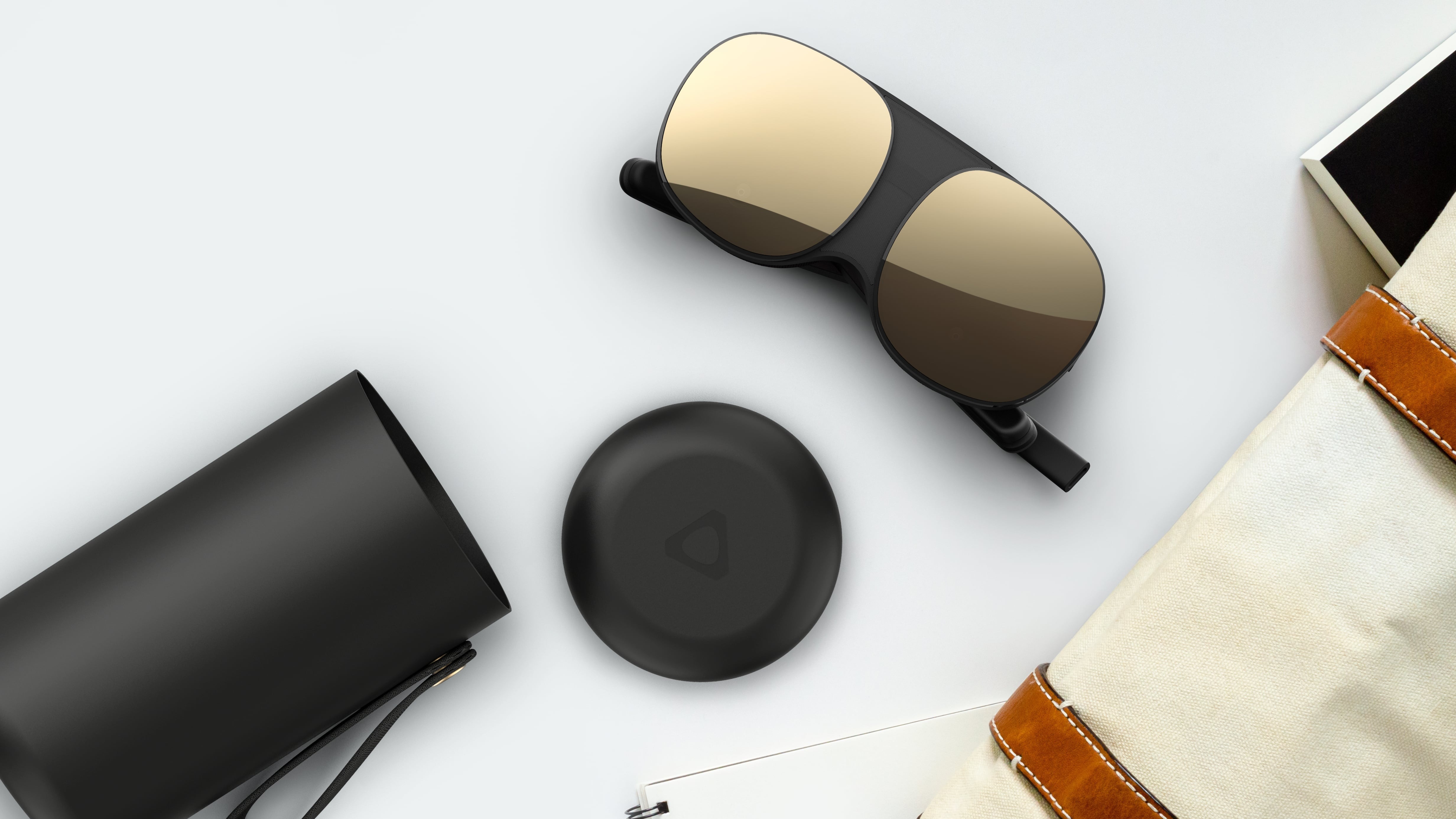
After much speculation, HTC Vive has officially unveiled its “big news in a small package” – a brand new virtual reality (VR) device, the Vive Flow.
Described by the company as “immersive eyewear” designed to straddle the line between a VR headset and smart glasses, the Vive Flow arrives as a light and portable entertainment, wellness and gaming platform for VR on the go.
There’s no seperate controller – the device is operated entirely by a user’s Android smartphone via Bluetooth – and at just 189g, it’s lighter than most of today’s best smartphones and fits neatly into a canister-like carry case to maximize portability.
- Read our first impressions of the HTC Vive Flow
- Magic Leap 2 is real and raises the bar for pro AR headsets
- Everything we know about the Oculus Quest 3
As for its specs, two LCD screens, 3.2k resolution and a 75hz refresh rate mean the Vive Flow can’t touch the brand’s more premium VR offerings like the HTC Vive Focus 3 for performance, but this is clearly a product with ease of use in mind.
The Vive Flow, does, however, boast a 100-degree field of view, a dual hinge fit system and snap-on face cushion, immersive spatial audio and adjustable diopter lenses – which the brand says should eliminate the need to wear glasses, for those that use them.

That audio is built-in to the arms of the device, while two microphones sit at the front for calls. The Vive Flow also sports an active cooling system that uses an internal fan to draw air from a user's face to avoid excessive heat and glass steam. It should be mighty comfortable to wear, then.
As for what the Vive Flow is for, exactly, HTC is banking on a variety of use cases. As we discovered in our brief hands-on time with the device, the eyewear can be used to play games, watch movies and TV shows or immerse yourself in a variety of wellness-oriented programs.
Get daily insight, inspiration and deals in your inbox
Sign up for breaking news, reviews, opinion, top tech deals, and more.
For instance, while you’re typically unable to lug a giant VR headset onto a plane when travelling, the Vive Flow can stand in as an ultra-portable cinema experience. Or, if you’re in a busy office, the eyewear can be used to enjoy some momentary relaxation time courtesy of the many meditation apps available on Viveport, the brand's digital store.
“With Vive Flow, HTC is taking technology in a new direction, focusing not on what we do, but on how we feel,” said Cher Wang, CEO of HTC, in a statement. “Maintaining our wellness has come to the forefront in the last few years, so it has never been more important to take time out to calm our minds, and Vive Flow provides the perfect opportunity to escape our four walls and immerse ourselves in our ideal ambience.”

The Vive flow takes standard USB to charge, so can be easily juiced up wherever you are, and will run comfortably for up to five hours, so says HTC. The company is also throwing in the carry case and bonus downloadable content for those customers who pre-order the device as of October 14.
Less exciting, though, is its price. At $499 / £499 / AU$749, the HTC Vive Flow is even more expensive than some of the most popular – and far superior – VR headsets out there right now, like the Oculus Quest 2 and PlayStation VR.
Sure, it's nowhere near the price of other HTC devices like the mainline HTC Vive, but half-a-grand for what is essentially the PSP of VR hardware (in terms of its form and portability, at least) seems a little excessive.
Will the HTC Vive Flow break into our list of the best VR headsets of 2021, then? It’s looking unlikely, but the Taiwanese tech giant deserves praise for developing a product that does indeed bring something new to the table – even if the price of innovation is a high one.
- What are the best VR headsets?

Axel is TechRadar's UK-based Phones Editor, reporting on everything from the latest Apple developments to newest AI breakthroughs as part of the site's Mobile Computing vertical. Having previously written for publications including Esquire and FourFourTwo, Axel is well-versed in the applications of technology beyond the desktop, and his coverage extends from general reporting and analysis to in-depth interviews and opinion. Axel studied for a degree in English Literature at the University of Warwick before joining TechRadar in 2020, where he then earned an NCTJ qualification as part of the company’s inaugural digital training scheme.